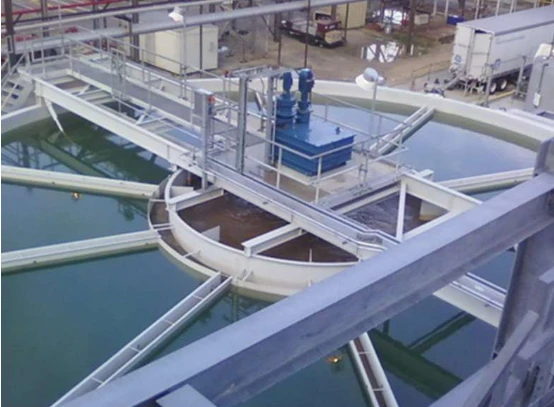
-
 Afrikaans
Afrikaans -
 Albanian
Albanian -
 Amharic
Amharic -
 Arabic
Arabic -
 Armenian
Armenian -
 Azerbaijani
Azerbaijani -
 Basque
Basque -
 Belarusian
Belarusian -
 Bengali
Bengali -
 Bosnian
Bosnian -
 Bulgarian
Bulgarian -
 Catalan
Catalan -
 Cebuano
Cebuano -
 China
China -
 China (Taiwan)
China (Taiwan) -
 Corsican
Corsican -
 Croatian
Croatian -
 Czech
Czech -
 Danish
Danish -
 Dutch
Dutch -
 English
English -
 Esperanto
Esperanto -
 Estonian
Estonian -
 Finnish
Finnish -
 French
French -
 Frisian
Frisian -
 Galician
Galician -
 Georgian
Georgian -
 German
German -
 Greek
Greek -
 Gujarati
Gujarati -
 Haitian Creole
Haitian Creole -
 hausa
hausa -
 hawaiian
hawaiian -
 Hebrew
Hebrew -
 Hindi
Hindi -
 Miao
Miao -
 Hungarian
Hungarian -
 Icelandic
Icelandic -
 igbo
igbo -
 Indonesian
Indonesian -
 irish
irish -
 Italian
Italian -
 Japanese
Japanese -
 Javanese
Javanese -
 Kannada
Kannada -
 kazakh
kazakh -
 Khmer
Khmer -
 Rwandese
Rwandese -
 Korean
Korean -
 Kurdish
Kurdish -
 Kyrgyz
Kyrgyz -
 Lao
Lao -
 Latin
Latin -
 Latvian
Latvian -
 Lithuanian
Lithuanian -
 Luxembourgish
Luxembourgish -
 Macedonian
Macedonian -
 Malgashi
Malgashi -
 Malay
Malay -
 Malayalam
Malayalam -
 Maltese
Maltese -
 Maori
Maori -
 Marathi
Marathi -
 Mongolian
Mongolian -
 Myanmar
Myanmar -
 Nepali
Nepali -
 Norwegian
Norwegian -
 Norwegian
Norwegian -
 Occitan
Occitan -
 Pashto
Pashto -
 Persian
Persian -
 Polish
Polish -
 Portuguese
Portuguese -
 Punjabi
Punjabi -
 Romanian
Romanian -
 Russian
Russian -
 Samoan
Samoan -
 Scottish Gaelic
Scottish Gaelic -
 Serbian
Serbian -
 Sesotho
Sesotho -
 Shona
Shona -
 Sindhi
Sindhi -
 Sinhala
Sinhala -
 Slovak
Slovak -
 Slovenian
Slovenian -
 Somali
Somali -
 Spanish
Spanish -
 Sundanese
Sundanese -
 Swahili
Swahili -
 Swedish
Swedish -
 Tagalog
Tagalog -
 Tajik
Tajik -
 Tamil
Tamil -
 Tatar
Tatar -
 Telugu
Telugu -
 Thai
Thai -
 Turkish
Turkish -
 Turkmen
Turkmen -
 Ukrainian
Ukrainian -
 Urdu
Urdu -
 Uighur
Uighur -
 Uzbek
Uzbek -
 Vietnamese
Vietnamese -
 Welsh
Welsh -
 Bantu
Bantu -
 Yiddish
Yiddish -
 Yoruba
Yoruba -
 Zulu
Zulu
grp flange
Understanding GRP Flanges A Comprehensive Guide
GRP, or Glass Reinforced Plastic, is a composite material that has gained popularity in various industries due to its exceptional strength, lightweight nature, and resistance to corrosion. Among the many applications of GRP, flanges play a critical role, especially in piping systems and structural assemblies. This article explores the significance, manufacturing process, advantages, and applications of GRP flanges.
What Are GRP Flanges?
GRP flanges are fittings used to connect two pieces of piping or equipment in a secure and leak-proof manner. They are made from a composite of glass fibers and resin, which provides enhanced mechanical properties compared to traditional materials like steel or PVC. The flanges can come in various sizes and designs, making them versatile for different applications.
Manufacturing Process
The production of GRP flanges involves several steps
1. Material Preparation The primary components—glass fibers and resin—are meticulously selected for the specific application. The type of resin may vary based on the desired chemical resistance and mechanical properties.
2. Molding The materials are combined and placed into a mold. Techniques such as hand lay-up, spray-up, or filament winding are utilized to achieve the desired shape and thickness.
3. Curing Once in the mold, the composite is allowed to cure. This step is crucial as it allows the resin to harden and bond with the glass fibers, resulting in a strong, durable product.
4. Finishing After curing, the flanges are demolded, and any excess material is trimmed. Final finishing touches, such as surface smoothing and machining, may also be applied to ensure a perfect fit for installation.
Advantages of GRP Flanges
grp flange

1. Corrosion Resistance One of the most significant advantages of GRP flanges is their exceptional resistance to corrosive environments. Unlike metal flanges, which can rust and corrode, GRP flanges can withstand harsh chemicals, making them ideal for chemical processing industries.
2. Lightweight GRP flanges are substantially lighter than their metal counterparts. This characteristic not only eases handling and installation but also reduces the overall weight of piping systems, leading to savings in structural support costs.
3. Cost-Effectiveness While the initial investment in GRP flanges may be higher than that of conventional materials, their longevity and low maintenance costs can result in significant savings over time.
4. Thermal Insulation GRP flanges have excellent thermal insulation properties. This feature is particularly beneficial in situations where temperature control is essential, as it helps to reduce energy consumption.
5. Versatility GRP flanges can be manufactured in various shapes and sizes, making them suitable for a wide range of applications, from water supply systems to offshore oil rigs.
Applications
GRP flanges are used across several industries, including
- Chemical Processing Due to their resistance to corrosive substances, they are commonly used in the transportation and storage of chemicals. - Water Treatment In water supply and treatment plants, GRP flanges help connect various components while resisting water and chemical damage. - Oil and Gas The offshore industry utilizes GRP flanges for their lightweight and durable properties, ensuring safe and efficient operations. - Construction GRP flanges are also used in structural applications, providing secure connections for various building materials.
Conclusion
GRP flanges represent a fusion of strength, resilience, and versatility, making them an invaluable component in numerous industrial applications. Their unique properties position them as a superior alternative to traditional materials, offering long-term cost savings and enhanced performance. From chemical processing to construction, the innovative use of GRP flanges continues to evolve, shaping the future of piping systems and structural engineering.
Latest news
-
Exploring the Benefits of Top Hammer Drifter Rods for Enhanced Drilling PerformanceNewsJun.10,2025
-
High-Precision Fiberglass Winding Machine for GRP/FRP Pipe Production – Reliable & Efficient SolutionsNewsJun.10,2025
-
FRP Pipes & Fittings for Shipbuilding - Corrosion-Resistant & LightweightNewsJun.09,2025
-
Premium FRP Flooring Solutions Durable & Slip-ResistantNewsJun.09,2025
-
Premium Fiberglass Rectangular Tanks Durable & Lightweight SolutionNewsJun.09,2025
-
Tapered Drill String Design Guide Durable Performance & UsesNewsJun.09,2025









